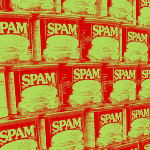Alternatives to sending email that will likely be flagged as Spam.–PC Pitstop.
Are You Sending Spam?
By Leo Notenboom
Am I Sending Spam?
Sending emails with attachments to many BCC’d recipients directly from your Hotmail account looks like you’re sending spam. I’ll talk about why, and suggest alternatives.
Question:I am a musician. Every couple weeks or so, I will sit down and send a large number of emails (on average 150 – 200) to radio stations, magazines etc. in order to promote my music. My email will usually consist of an attached mp3 and/or links to YouTube videos etc., along with a bio/description about myself and my music. Though I have had many responses through email, there are still several that have never replied. It suddenly occurred to me, as well as not being interested in the music I am sending them, (can’t please everyone) could some of my emails be getting marked as spam?
I use a Hotmail account, which I know you say is bad. But I fear that suddenly changing my email will result in a loss of business. I used to send each email individually, personalizing each one, but since my contact list has grown there are not enough hours in the day to do this. So I use Bcc and send them all in one go.
My question is, do my infrequent emails qualify as spam? Despite the fact that they are spread out over numerous weeks, do the large quantities mean that only a certain number are getting through daily?
Leo’s Answer:
In short: yes. It’s very likely that your emails are being sent to spam folders.
There are several things that could contribute to this. I’ll review what I think those are, and what I recommend you do instead.
What constitutes spam
While it varies in detail, the formal definition of spam is something along the lines of “unsolicited commercial email”.
Did your recipients ask for or formally agree to receive the the email? No? Then it’s unsolicited. For many, that alone is enough to qualify as sending spam.
Is it promoting your work or business? Well, that makes it commercial.
So yes, sorry to break it to you, but according to at least one definition you are indeed sending spam. If anything is surprising, it’s that some of it makes it through.
Now, spam filters don’t always know about things like intent or what it means to be commercial. Let’s face it, we all get a lot of email that we don’t explicitly ask for, and some of it is very valuable. Clearly, spam filters do a pretty good job of separating wheat from chaff.
How do spam filters work? The most common approach is to evaluate incoming email by the characteristics of email that people have explicitly identified as spam. The filter tries to determine whether or not messages should be sent directly to the spam folder, unless the recipient has somehow indicated otherwise.
Besides being unsolicited, what you describe has at least three characteristics commonly associated with actually sending spam.



